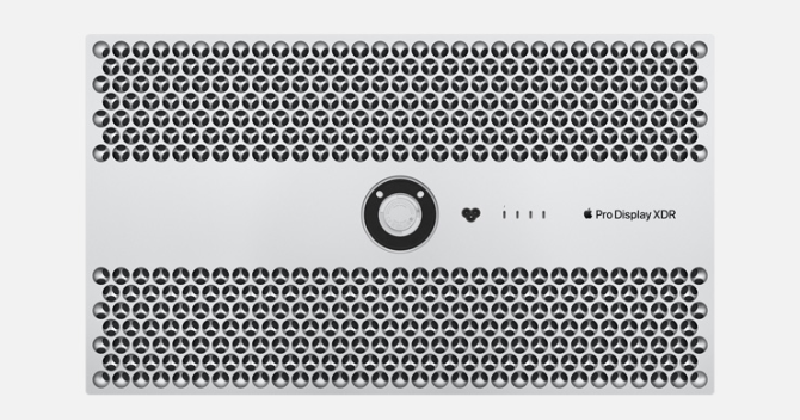
After the immense failure of the 2013-era Apple Pro trash can Mac, Apple has been hard at work at the next generation of workstation desktops. This week, the new Mac Pro has been announced, and the specs are amazing: We finally can buy a professional, desktop Mac with half the storage of an iPhone. The big story isn’t the next generation of cheese-grater Macs, though: the new display, the Pro Display XDR, has killed the venerable VESA mount and we couldn’t be happier.
The VESA mount, or more correctly, the VESA Mounting Interface Standard, was created in 1997 as a mounting standard for flat panel monitors and televisions. Look on the back of your monitor, and you’ll probably find a pattern of M4 threaded inserts laid out on a 75mm or 100mm square. Larger sizes, with respectively larger thread sizes, are used for gigantic wall-mounted televisions. For the last two decades, this has been the standard for mounting monitors to stands. Now this standard faces a challenger thanks to the brave designers at Apple.
The new Pro Display XDR connects to the Pro Stand with a ‘puck-shaped magnetic connector’. This connector is designed to attach to the back of the Pro Display XDR and locks the Pro Stand and display together. This is a magnetic display mount, a game-changing advance in monitor mounting technology.
The new Pro Display mount allows for something not many VESA mounts are designed for: The Pro Display XDR can rotate into either portrait or landscape mode. While details are still forthcoming if this display will automatically change the display orientation in MacOS, this is something that has been possible for thirty years, the patent is absolutely expired, and anyone could build a dongle that switches between portrait and landscape mode automatically in relation to the direction of gravity.
The Apple Pro Stand goes on sale this fall, with a retail price of $999. You can tell that’s the punchline because that’s where we’re ending the article.
We’ll be waiting for the release of the Pro Display this fall, but in the meantime, get your pitchforks ready. There’s no way this display has any sort of sensor to detect which direction ‘down’ is, and you’re going to end up going into your computer’s settings to change between landscape and portrait.

